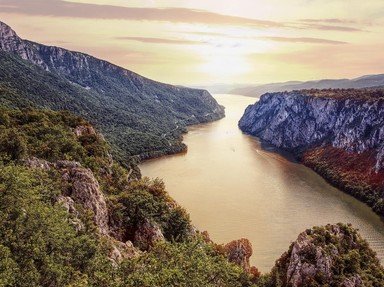Quiz Answer Key and Fun Facts
1. The first urban settlement in the place of modern Belgrade was built by the Celts in the 3rd century BC. When the Romans conquered it, what did they call it?
2. You are standing on the fortress rising above the junction of two big European rivers, admiring a superb view. Name these two rivers.
3. What is the name of the fortress above the river confluence in Belgrade?
4. The best-known football team of former Yugoslavia, World Champion for 1991, Crvena Zvezda (Red Star) plays in its stadium that could originally receive up to 110,000 spectators. What is its popular name?
5. This temple, which can be seen from all of Belgrade, is the largest Eastern Orthodox Church building in the World. What is its name?
6. After a long walk through the city, you can go dine in one of the well-known 19th century-style restaurants in the famous bohemian quarter of Skadarlija. Which restaurant is NOT in Skadarlija?
7. Belgraders like to meet each other 'by the horse'. Where is it?
8. This TV tower was once the unofficial symbol of Belgrade. It was on the top of which volcanic mountain in the city outskirts?
9. Today it is a commercial palace, unofficial and symbolic centre of the city, named after a once popular restaurant. It is called what?
10. Summer is hot in Belgrade and people mostly go to cool themselves by swimming on what river island?
11. It is autumn, and you are preparing for a long walk through the city. You will more likely take an umbrella with you than a wind-jacket.
12. Walking around the city, you'll notice many partly empty quarters or strangely missing buildings. It is mostly the consequence of what?
13. This modern hall can receive 23,000 spectators. Name it!
14. Twelve Tomahawk missiles were fired at this tall building, but it miraculously survived these attacks and was still standing. What is it called?
15. Like many other southern European and Mediterranean cities, Belgrade is very lively at night, but it has one unique feature that distinguishes it from the others. What is it?
16. Belgrade is the city of art festivals. Which one is NOT the Belgrade's festivals?
17. What was the approximate population of Belgrade, according to the 2002 census?
18. Belgrade is closer to the Equator than New York.
19. Belgrade lies at the altitude of how many meters above sea level?
20. Which one was NOT a historical name for Belgrade?
Source: Author
St Sava Jr.
This quiz was reviewed by FunTrivia editor
minch before going online.
Any errors found in FunTrivia content are routinely corrected through our feedback system.
